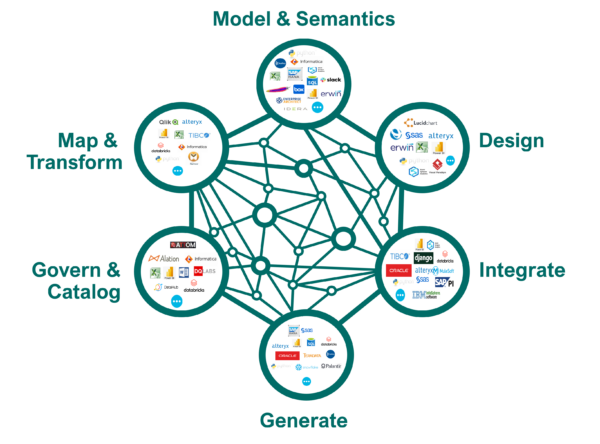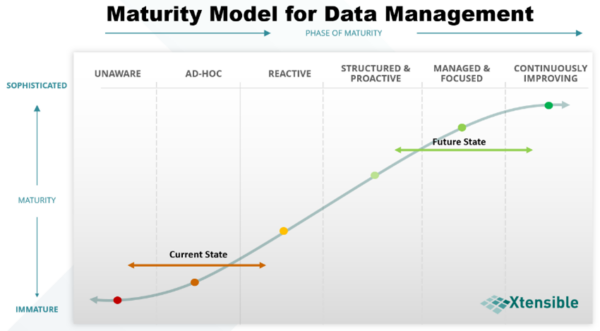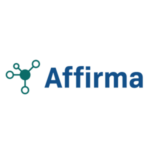Managing the 6 data nodes
An integrated approach to the data journey can help organizations achieve operational excellence, reshape strategy, build resilience, and avoid technical debt as both the internal and external environment in which business is conducted continues to change.
Understanding and managing the data journey is crucial for maximizing the value of data, from when the data is collected and eventually for when it is no longer in use or even disposed of. We think of the data journey as being comprised of six connected data nodes:
- Govern and Catalog – The ability to manage and organize the availability, usability, integrity, and security of an organization’s data assets.
- Model and Semantics – The ability to create a common understanding, structure, and physical representation of data and its relationships within an organization.
- Design – The ability to describe what data is stored and what data is moved between systems and solutions both internal and external.
- Map and Transform – The ability to synchronize and convert data from one structure to another to make it more suitable for consumption.
- Integrate – The ability to combine data from different sources and consolidate it into a unified view.
- Generate – The ability to physicalize data-at-rest or data-in-motion to facilitate data storage and movement between systems.
Effective data management practices, governance, and technology solutions are essential components of a successful data journey but how is the data journey typically managed today? We decided to find out.
Understanding how organizations manage their data journey today
During a recent event, while sharing the Xtensible vision we asked participants how they manage their data journey. You can see the result! In general, an organization uses more than three different vendor solutions to manage the data journey, augmented with in-house solutions and manual interventions.

For instance, one organization uses a combination of Collibra, Hana, Python, SAP, and AWS, and was unsure of their technologies for integration. The person we spoke with was unsure how their data warehouse instance is generated and kept up to date. Members from another organization mentioned eight different vendor solutions and were not sure about data governance and data cataloging.
“Data management is an ongoing commitment, not just for IT but for the entire organization. Systems change and mature, and available data continues to increase.”
You are beginning to see the picture. Organizations know they must manage their data journey, both from an IT perspective and from a business perspective. They reach out for solutions for the different data nodes, resulting in technologies from different vendors that are not connected. No wonder there are in-house solutions, thousands of excel sheets, and a lot of labor involved. This is exactly what we have heard and seen at Xtensible over the years.
Struggles to find the data you need
Take the case where data cataloging is unknown. Chances are people struggle to find the data they need, and when they do find it, they probably will not completely trust it. Think about the wasted resources and missed opportunities for insights and innovation. This organization will likely in the future “buy a Data Catalog solution”. But will they make sure that the Data Catalog does not exist in a vacuum?
And what about the organization with eight different vendor solutions? A task such as generating a new version of their data lake while in the process of changing their Customer Information Management System turns into a digital puzzle with at best a fuzzy picture on the box.
“The lack of connectivity between the data nodes causes organizations to spend time and money solving a whole host of problems after the fact.”
Solving these challenges and others are only a small set of tasks given to Xtensible over the years by our clients. We developed methodologies for our consulting services so that we could deliver efficiently and consistently. We developed our initial Enterprise Semantic Information Modeling product, utilizing standards as a starting point, combined with a set of best practices for internal use in response, and realized our clients wanted to keep using it. But it was a solution for one of the data nodes, with for instance mapping and integration still a labor-intensive effort. A seamless solution where constant change is part of daily life was needed. What we offered was not good enough in our eyes.
Maturing the data journey
Our approach was to create a solution, Affirma, our Enterprise Semantic and Metadata Management Solution, to provide the missing capabilities, and to connect and augment where needed, the technologies our clients use in order to mature their data management practice. The foundation is the semantic model for the organization, the conceptual framework used to represent and convey the meaning or semantics of data.
“Our goal is to add context, relevance and meaning to data being raw and unorganized facts thereby turning data into information upon which decisions and actions can be confidently based.”
One missing capability was data lineage. Our solution needed to provide a comprehensive and detailed record of how data is created, processed, transformed, and used within an organization, highlighting the journey it takes. Another capability getting a lot of attention these days is the ability to generate an analytics platform. Our goal was to enable a “Managed and Focused” approach to data management through technology, and understanding that people skills and process maturity is essential as well.

Map your data journey
Why don’t you take a moment to map the data journey at your organization? Will you add to the list of technologies already listed above? Likely, you will find data journey silos giving rise to several issues, which impact efficiency, productivity, and competitiveness. Assess where you are as far as data management maturity, and where you would like to be in perhaps three years.
As your organization grows and your data needs expand, so too should your organizations data management capabilities.
About Affirma
 Affirma is a seamless and single point of reference for data modeling, mapping, analytics, and integration for those who are seeking to act and digitally transform through their data in support of operations and changing business needs while embracing new technologies and innovation, developed by Xtensible.
Affirma is a seamless and single point of reference for data modeling, mapping, analytics, and integration for those who are seeking to act and digitally transform through their data in support of operations and changing business needs while embracing new technologies and innovation, developed by Xtensible.
About Xtensible
Connected data and technologies provide insights adding unimaginable value for our common future. At Xtensible, we ensure that you have frictionless access to your data across your entire organization all the time. Our strategic framework defines our engagement approach, helping you do more with less. Our approach increases the trust in data used for decision making, reduces risk, and enables you to make financially sound decisions. Our services are based on a partnership mindset and deep information and data, and systems architecture knowledge and experience. We leverage industry standards to support you through your entire journey towards strategic business objectives.
Today and for the foreseeable future we will be experiencing significant shifts in both personal and corporate behavior triggered by technological advances, awareness, security, and regulatory requirements. The data journey must become more inter-connected. Want to know how?
Learn more about Affirma and how to navigate change! Speak to a member of the Xtensible team.
ABOUT THE AUTHOR
 |
Erika Ferguson
Consultant at XtensibleWith over 20+ years of utility industry experience she is positioned to understand, appreciate, and embrace opportunities, and drives results by bringing people and ideas together. |
Back To Blog




